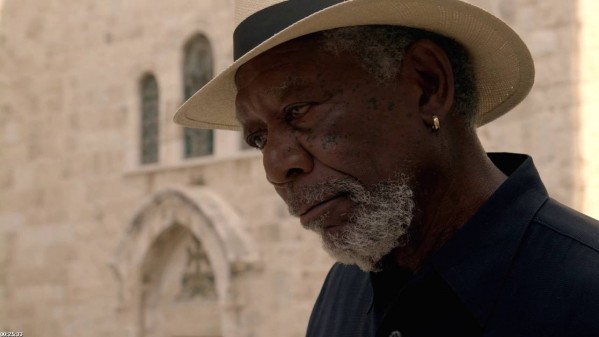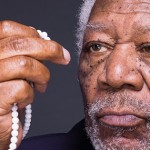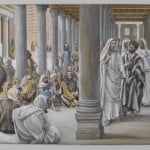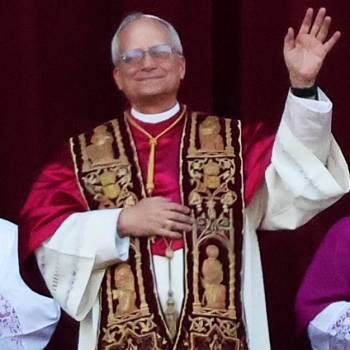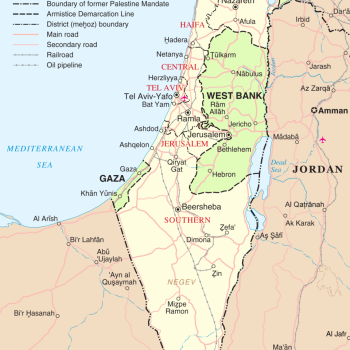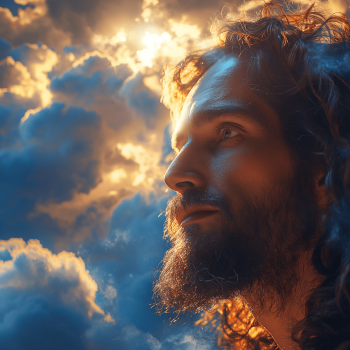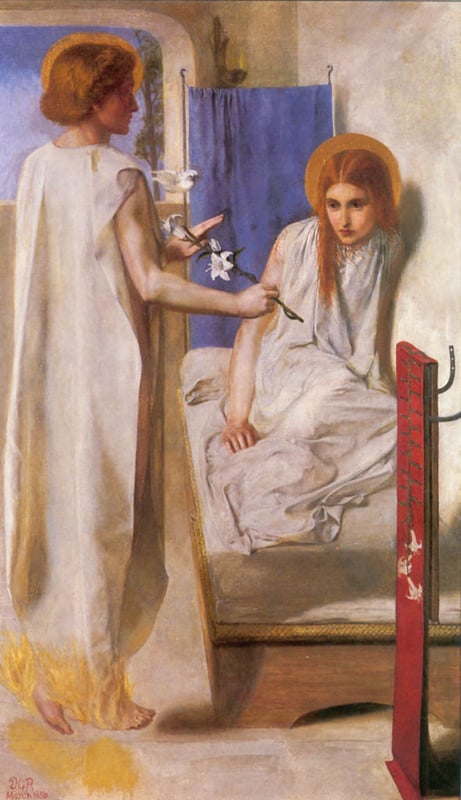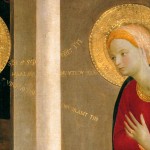The second hour of Freeman’s Story of God opens with him sitting at his breakfast table, reading the newspaper and glancing at TV news.
He narrates his own scene, the common American morning. We gird ourselves to walk out into a world where alarming things are happening.
In this, he demonstrates our fixation on the possibility of annihilation. We may think of Apocalyptic ideas as the stuff of crazy religious zealots, but the news is about this possibility, the world around.
Is it all in our minds, Freeman asks? Or is it real.
Freeman then explores the roots of Judgment Day in Christianity, and also in Judaism and Islam.
It all begins in Jerusalem, the epicenter of the monotheistic world. The ancient Temple, built in 37 BC by Herod the Great, was seven stories high. In 70 AD, the Romans demolished it, systematically pulling it down, leaving only the western wall, which remains the holiest place in Jerusalem and a pilgrimage site for Jews all over the world.
The Jewish Messiah is tied to these ruins. He will do three things: rebuild the temple; rule justly; and build peace with all neighbors.
Legends proliferated of the great battle the Messiah will win, a war between the sons of light and the sons of darkness. The enemy takes on many forms and names: the Beast; the number 666.
In Rome, at the Biblioteca Casanotensi, Freeman shows us fragments of the manuscript of the Book of Revelation, in which this battle is described. The librarian walks us through deciphering the numerical values of Greek letters, and we learn that Nero is the likely suspect for the Beast, that the Greek letters of Caesar Neron have a numerical value of 666. And so does the word Beast.
I remember learning years ago how Nero enjoyed cruelty. One of his penchants was using Christians as torches to light his garden parties – a burning martyr on a stake in each corner of his lawn, and a gala in the midst of it all. Of course Nero would be the dreaded Beast of Revelation, and who wouldn’t long for an Apocalyptic battle to overthrow him.
The idea of apocalypse faded in Christianity, but then spread into Islam. Now we, America, are their Beast. Freeman interviews a well-spoken Moslem, formerly a fighter against the west, then imprisoned, where he learned from Imams to think more deeply. Now he, a Moslem, works to free other young men from ISIS.
I was struck by his observation: When you are poor and powerless, and have no future to shape for yourself, it is very tempting to feel you could shape the destiny of the world.
Freeman interviews an American professor, Stuart Shenkman, who studies fear in the human brain. He thinks apocalyptic ideas may be hard-wired into us, and shows experiments in which human reactions to unpredicted pain are worse than to predicted pain, Predicting pain can quell our fear response. Shenkman thinks Doomsday Cults may function in this way.
Freeman’s next journey, to Tikal, the land of the Mayas, explores the Mayan idea of time, which sparked a fear of the end of the world in December, 2012, supposedly based on a Mayan calendar. Archeologists show us stone carvings on their calendar, proof they did not believe in an end of time, but in endless cycles of time, and each end (one was in 2012) brings a new beginning.
In Judaism, Christianity and Islam, the end of days is when God intervenes and rights all wrongs, establishing justice and peace. But most of the world – Buddhists, Hindus – does not think this way. Like the Mayas, most of the world believes that every ending is a new beginning.
Christians, too, believe in new beginnings emerging from dark, end times, and Freeman demonstrates this in New Orleans, where survivors of Hurricane Katrina point to the hope that was born from that darkness.
This brilliant and fascinating hour ends with Freeman reminding us that the word Apocalypse, a Greek word, means ‘lifting the veil’. It is not about death. It is about enlightenment.
I’m still working at understanding darkness, and especially, endings. There is so much pain in loss, especially when cultures, cities, dreams, die. The Mayans are gone, though their calendar did not predict it. Time may be endless, but we are mortal, and we all live through cataclysmic times. As Jesus did. What then?- remains a question, more important to us than When?
I was deeply moved by this hour. Freeman moved into our present time, into what terrifies us, and deeply into our human past, in ways that made this discussion eye-opening. I’m ready to watch this again. And, ready to move on in the Story.
______________________________________________________________________________________
Image: Morgan Freeman in Jerusalem making the program, The Story of God, National Geographic Channel

